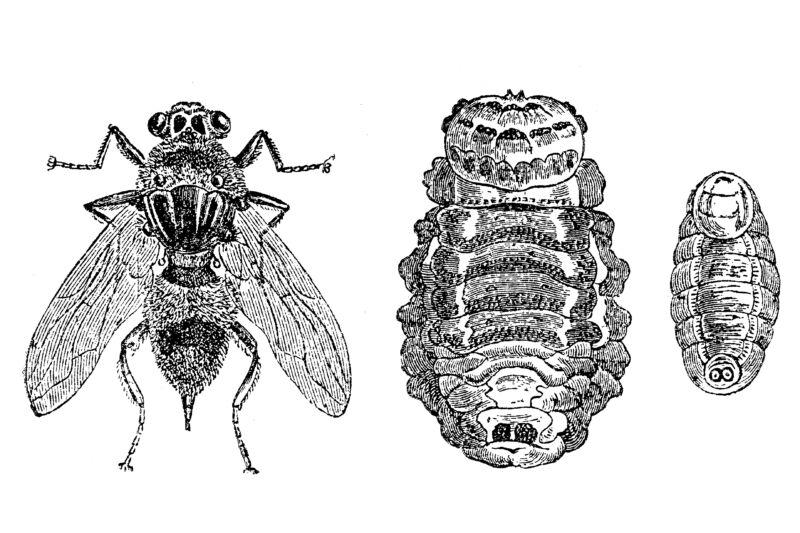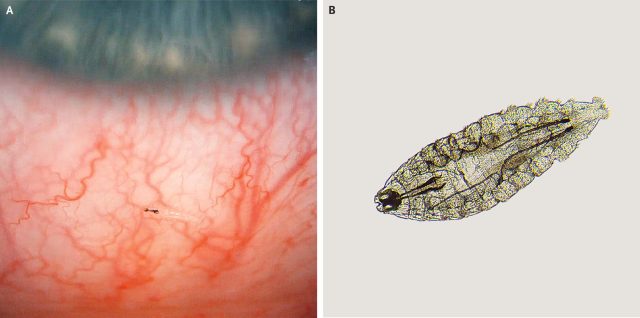
On Wednesday, doctors in France reported a rare case of tiny sheep bot fly larvae—aka maggots—infesting the outer surface of a man’s eyeball.
The small, spiky larvae were seen slithering around the man’s peeper, which explained the redness and itchiness he was experiencing. Doctors counted more than a dozen of the disturbing grub-like critters outside the eyeball and surrounding tissue. Doctors had no choice but to pluck the bloodsuckers out, one by one, using forceps. The doctors also prescribed topical antibiotic treatments in case they missed any bugs.
Sheep bot flies, or Oestrus ovis, are found worldwide in areas with sheep. They typically deliver their squirmy offspring to the nostrils of sheep and goats. The larvae mature in their nasal nurseries, then fall to the ground and pupate in the environment before transforming into parasitic pests. But, on rare occasions, adult female flies become bleary-eyed and lay festering broods in a human eyeball, causing a disease called ophthalmomyiasis. This is typically a dead end for the flies; the larvae generally don’t survive to adulthood in the human eye. But if you think the unfortunate infestation is nothing to wince at, you’d be incorrect.
Eye-opening
Oestrus ovis larvae have bands of thick spikes around the outside of their bodies and piercing hooks in their mouth. The spikes can cause irritation and abrasions on the outer membrane of the eye as they wriggle around. This can lead to redness, itchiness, swelling, watering, and a feeling of a foreign body in the eye.
In rare cases, the larvae can also burrow their way inside the eyeball. Once inside, they can cause more severe damage, including to vision. Symptoms can manifest as floaters in vision, flashes of light, lines through vision, and eye pain. Even if the maggots die inside the eyeball—whether by laser treatments or natural causes—the lingering larval corpses can cause serious inflammation, which can further imperil vision. Overall, the outcomes of ophthalmomyiasis, which can be caused by a variety of flies, can range from mild, short-lived discomfort to blindness.

/ External ophthalmomyiasis (left, showing larvae present in eye) due to
Oestrus ovis larvae (right).
Regarding the case in France, published Wednesday in The New England Journal of Medicine, the man was lucky. The infestation was only external ophthalmomyiasis, meaning the larvae didn’t get inside his eyeball. The 53-year-old man went to an emergency department after dealing with itchiness in his right eye for several hours. He told doctors he was gardening earlier in the day near a sheep farm and felt something get into his right eye, though he didn’t know what it was.
Doctors noted that the man had 20/20 vision in both eyes, but his right eye was red and irritated. A closer look revealed the squirmy interlopers. After the maggots were manually removed, the man was given topical treatment. At a 10-day follow-up, the man’s eye was back to normal with no other symptoms.